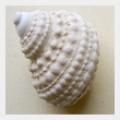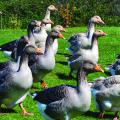Welcome Downeast
The Town, the Bays, the Mountains
—William Shakespeare
Dear Friends:
New green is beginning to show on trees and shrubs up and down the coast. Daffodils are in bloom and dandelions too in sheltered Southern exposures. How do these plants survive the bitter cold winters? Their basic survival strategy is to raise the sugar content of their sap and draw most of it down into the roots underground when the growing season ends and the cold winds begin to blow. Just enough is kept in the buds to keep them alive until the sun begins to warm the ground and the plant knows it’s time to pump the sap back up, we know not how. During the winter, these tender buds on trees and shrubs are protected from the cold by tough bud scales that cover their soft flesh completely, sort of like us when we bundle up from head to toe to venture out into the snow. In spring, the buds throw off their cloaks and unfurl their leaves and flowers to the mighty sun, with a silent cheer for the season ahead. We do the same.
Natural events, May
Just like clockwork, male ruby-throated hummingbirds appear, sipping contentedly at the feeder and fencing aggressively with each other, staking out their territory before the lady hummers return. Geysers of sweet sap surging up from the roots of the red maples and American elms have fed and unfurled their tiny blossoms which are now pushed off by emerging seeds and leaves. The ground under red maples is blanketed with their fallen carmine blossoms, and Norway maples display their pale yellow-green flowers.
Saltwater report
Alewife season comes to an end, with the last migrating alewives of this season seen at a nearby pond. Numerous eagles lined the tidal stream that flowed from the pond, searching for a meal. Alewives (Alosa pseudoharengus) are anadromous, meaning they migrate from salt to fresh water and back. These foot-long fish were once a spring staple for Native Americans and early Europeans, not to mention eagles, ospreys, herons, raccoons, codfish, haddock, halibut, seals, whales: everything eats alewives. Over the years their numbers dwindled due to the obstruction of streams by dams and culverts. In recent years, more and more conservationists, towns, and land trusts have caught “alewife fever” and are doing the hard work of restoring these sea-run fish to coastal streams, so that a primordial rite of spring has begun playing itself out again, to the delight of thousands of creatures.
Field and forest report
Dandelion season has commenced, their sunny faces are dotting South slopes as they do every year—our nominee for Finest Invasive Species. Dandelion seed heads glow electric with the morning sun, like some geodesic design by Bucky Fuller. But no, they were designed by a much greater Architect than he was. Goldfinches like them, as do sparrows, known to pull tall dandelion stalks down to the ground so they can peck out the seeds, snipping off the little parachutes first. Some people will try to suppress or eradicate dandelions from their yards, I forget why, but they are using a teaspoon to stop the tide. The seeds are floating in abundance everywhere, and the plants are so good for so many things. Efforts to suppress them are bound to fail.
 Illustration by Candice Hutchison
Natural events, June
Illustration by Candice Hutchison
Natural events, June
Close to the ground, bluets, violets, and wild strawberries are in bloom. This is highlighted by the traditional name for the coming moon, that is, “Strawberry Moon.” In her 2013 classic Braiding Sweetgrass, Robin Wall Kimmerer writes about waiting for wild strawberries to ripen as a child: “You could smell ripe strawberries before you saw them, the fragrance mingling with the smell of sun on damp ground. It was the smell of June, the last day of school, when we were set free, and the Strawberry Moon… Even now, after more than fifty Strawberry Moons, finding a patch of wild strawberries still touches me with a sensation of surprise, a feeling of unworthiness and gratitude for the generosity and kindness that comes with an unexpected gift all wrapped in red and green.”
Everywhere, nature is teaming with life. A mourning dove stands on the edge of its nest calmly feeding its squabs with crop milk while their heads stretch up in the cool shade high in a white birch. Robins and bluejays play tag in the clearing while hermit thrushes and white-throated sparrows call from the woods, and loons and eiders call from the water. Bumblebees and digger bees hop from bloom to bloom smeared in living pollen. Chipmunks scurry through fallen leaves and a young white-tail buck, sleek and fattened on fresh new browse, with its new antlers covered in velvet, emerges at the edge of the woods. The daily will to live is everywhere expressed in leaf, fur and feather, call and song.
Rank opinion
The same organic transformation going on all around us can happen within us, too, if we are willing. Like the trees, we can go from supplication to praise, from stingy to generous, from inward to outward. Like the flowers, we can open ourselves to the lives around us and give what we have to give indiscriminately, without concern that those who receive are deserving or undeserving, righteous or unrighteous, conservative or liberal, correct or incorrect. In this season we can go easily from selfish to unselfish, from sinner to saint, in perfect accord with the blooming, bustling, buzzing world around us.
Field and forest report
Flourishing flowers means pollen, which has a venerable history and is viewed as sacred by pueblo people and by the Navajo. Archaeologists value pollen for dating ancient burials and other sites because the shells of pollen grains fossilize well; the oldest to be found is some 130 million years old!
The wind spreads tree pollen far and wide making millions sneeze and wheeze and leaving a light coating of yellow dust on our cars. Hay and wild grasses tend to be wind-pollinated. Later in the season we’ll see that sneeze-monger, ragweed, which is also wind-pollinated. The larger, more showy flowers are mostly pollinated by insects so their pollen is heavy and sticky and unlikely to cause allergic distress. Domestic honey bees and Maine’s some 270 species of wild pollinators are busy when the sun shines, loading up on nectar and pollen to feed the hive with their rich harvest.
Natural events, late June
The familiar rhythms of summer gently fall into place. Foggy days with warm moist air give way to sparkling sunny “blue and green” days in the afternoon as the land warms up. Featureless overcast skies give way to towering white cumulus clouds, and then a thunderstorm in the afternoon shakes the earth like gods at war. In-your-face blackflies give way to slightly more polite mosquitoes and no-see-ums. Trees are fully fledged and work overtime these longest days of the year to add new growth to their height and breadth and another annular ring to their girth. Now that the time of frenzied fertilization is over, the trees and the early wild flowers have settled down to the task of nourishing their seeds for seasons to come. Plants and animals all seem to do the same: giving themselves for coming generations. This is their unspoken purpose, to sprout, to grow, to flourish, and then to fade, leaving behind healthy seeds and soft soil made from their fallen bodies in which their seeds can flourish in turn. This is how they care for their own kind and generations to come.
Seedpod to carry around
From Dorothy Frances Gurney: “Kiss of the sun for pardon, song of the birds for mirth: One is closer to God’s heart in a garden than anywhere else on earth.”
That’s the Almanack for this time. But don’t take it from us—we’re no experts. Go out and see for yourself.
Yr. mst. humble & obd’nt servant,
Rob McCall.
✮
Rob McCall (1944-2023) lived in Brooklin, Maine. The selections in this almanack were excerpted from his archives.
















